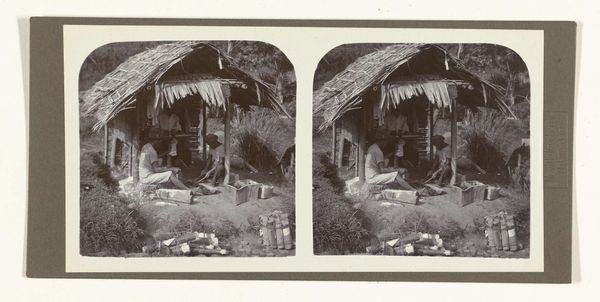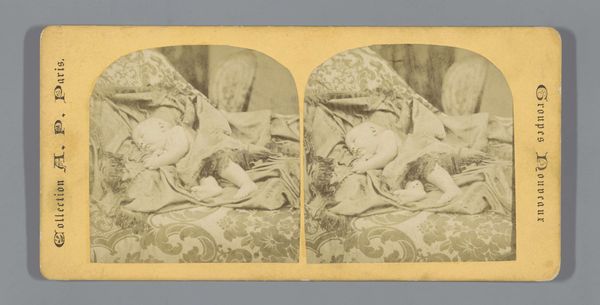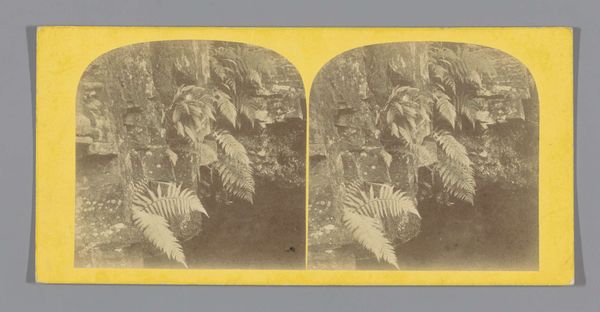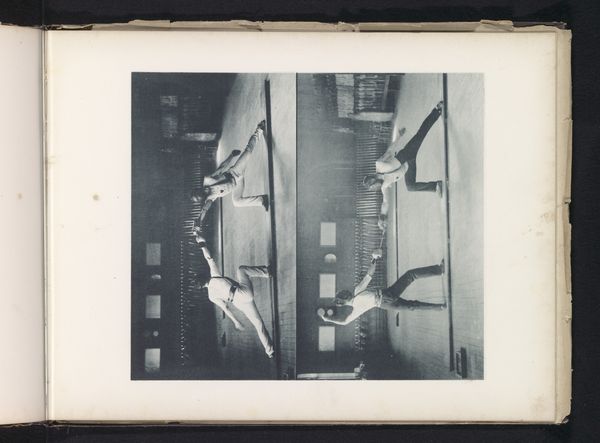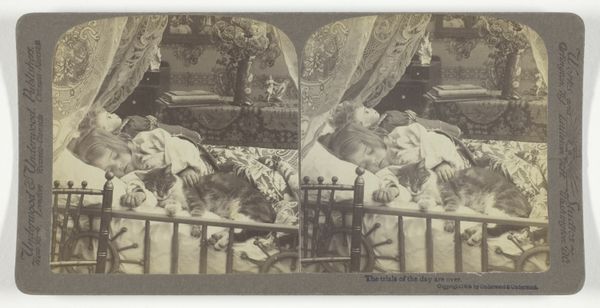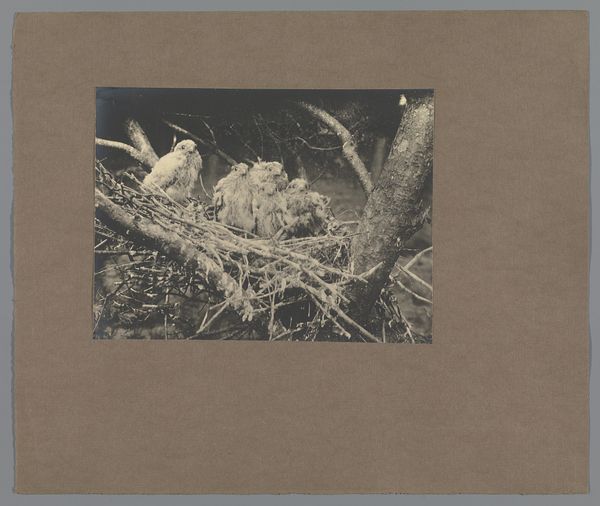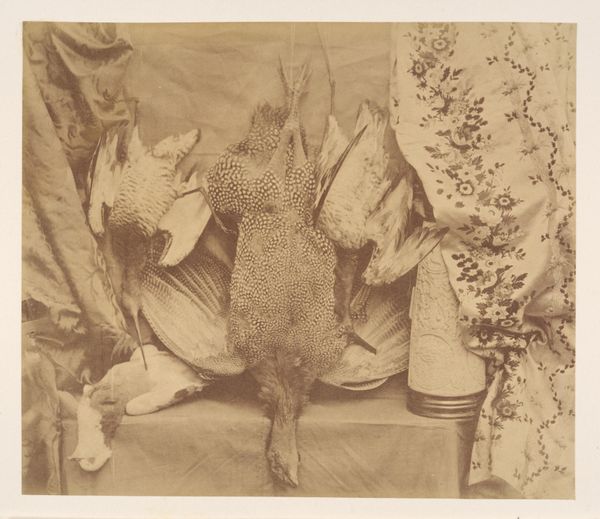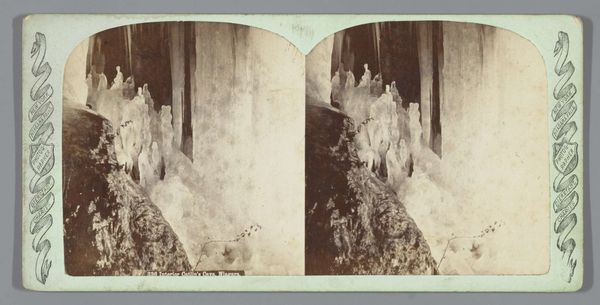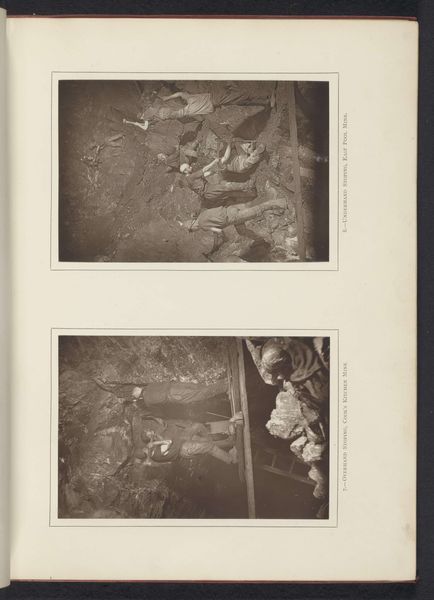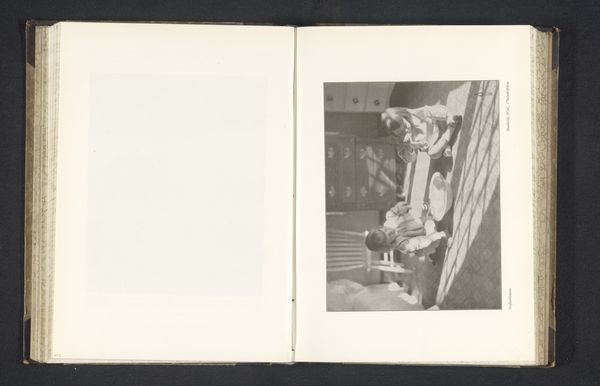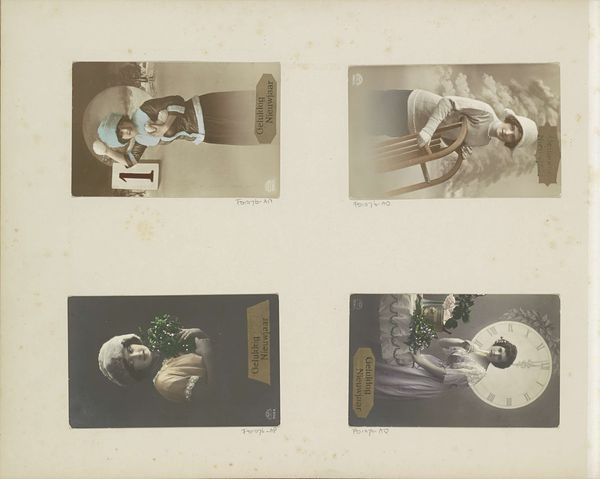
photography
#
portrait
#
photography
#
genre-painting
#
erotic-art
Dimensions: height 88 mm, width 179 mm
Copyright: Rijks Museum: Open Domain
Curator: At first glance, there is something rather charmingly languid about this monochrome photographic image. Editor: Languid, indeed! The subject's repose amidst what appears to be manufactured opulence creates a rather calculated presentation. The work is called "Liggende vrouw op een bankstel," or "Reclining Woman on a Sofa," dating roughly from 1870 to 1890. Curator: The staging is fascinating. We have the woman, presumably the subject, lounging on the chaise, adorned with fans and what appears to be a tennis racket—objects associated with leisure, status, and power during that era. This combination attempts to construct an image of refinement and sophistication. Editor: I agree the careful selection of objects definitely speaks to how constructed and mediated these images were to reflect upper middle class values, like cultivation. Technically, note how the shallow depth of field blurs the background and the foreground stool while drawing all our attention to the central female figure, a common compositional approach to these intimate settings. The black-and-white toning, too, has the effect of further idealizing the scene. Curator: The stereotype that these photographs were mere snapshots misses the point that they operated in very defined social circuits. They offer a curated performance that upholds—and also potentially critiques—the strict gender norms governing representations of women in the late 19th century. Who are we to even say who or what she is? She may represent one of these so-called fallen women. This photograph offered audiences a form of escape to these types of images to satisfy their curiosities about subjects like prostitution. Editor: While a degree of staging is involved, do you think this woman is a social marker? This could merely be someone commissioned for art's sake. Look at her posture, relaxed yet calculated; it feels performative but simultaneously invites a gaze, doesn't it? Perhaps the artist aimed to portray beauty in ease. The composition isn't merely about social critique; it seems to revel in capturing the form, light, and shadow interplay. Curator: Regardless of its intended purpose, this photo provokes us to rethink our interpretations of representations of women and beauty during that era. It's much more than aesthetics at work here. Editor: True, although personally, I find that interplay with artifice deeply compelling.
Comments
No comments
Be the first to comment and join the conversation on the ultimate creative platform.
